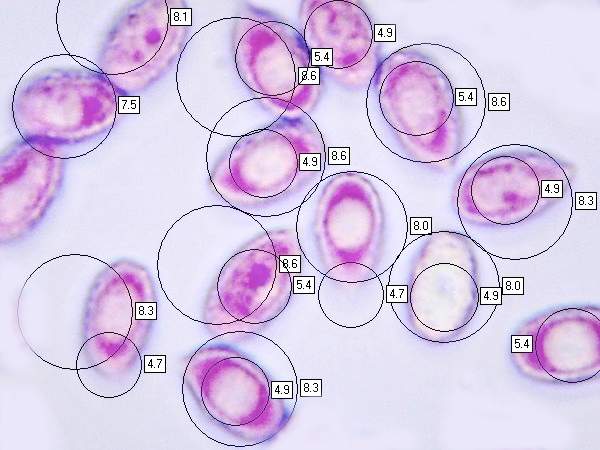Melanoleuca grammopodia (Bull.) Murrill - Grooved Cavalier
Phylum: Basidiomycota - Class: Agaricomycetes - Order: Agaricales - Family: Tricholomataceae
Distribution - Taxonomic History - Etymology - Identification - Culinary Notes - Reference Sources
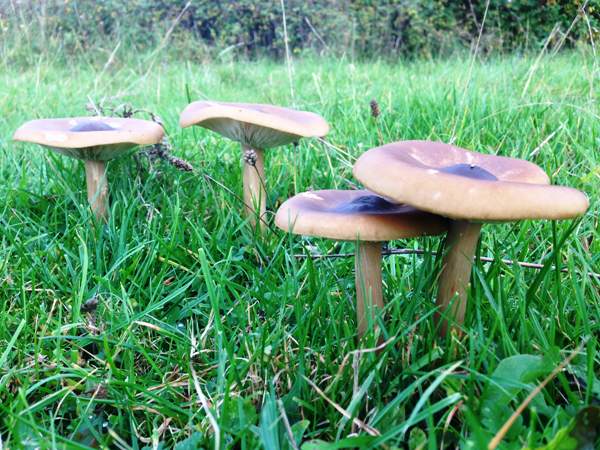
Seen from the top, especially when growing in grssland, the Grooved Cavalier Melanoleuca grammopodia is easily confused with other species in the same genus. Seen from the side, the patterned stem is a helpful aid to identification.
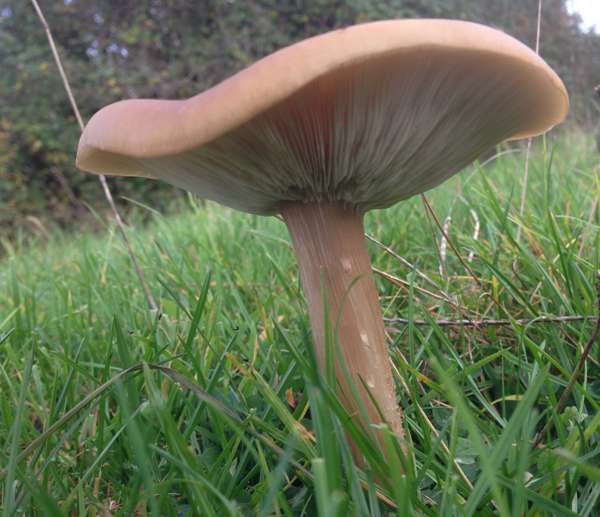
Distribution
Widespread but uncommon in Britain and Ireland, Melanoleuca grammopodia occurs also in some mainland European countries including Germany, France and Italy. This species is also recorded in parts of North America.
Taxonomic history
This mushroom was described in 1792 by pioneering French mycologist Jean Baptiste Francois (Pierre) Bulliard, who gave it the binomial scientific name Agaricus grammopodius (at a time when virtually all gilled fungi were placed into the genus Agaricus, from which most have since been redistributed to other newer genera). It was American mycologist William Alphonso Murrill (1869 - 1957) who in 1914 transferred this species to its present genus, thereby establishing its currently-accepted scientific name Melanoleuca grammopodia.
Synonyms of Melanoleuca grammopodia include Agaricus grammopodius Bull., Gyrophila grammopodia (Bull.) Quél., Tricholoma grammopodium (Bull.) Quél., and Melanoleuca subbrevipes Métrod.
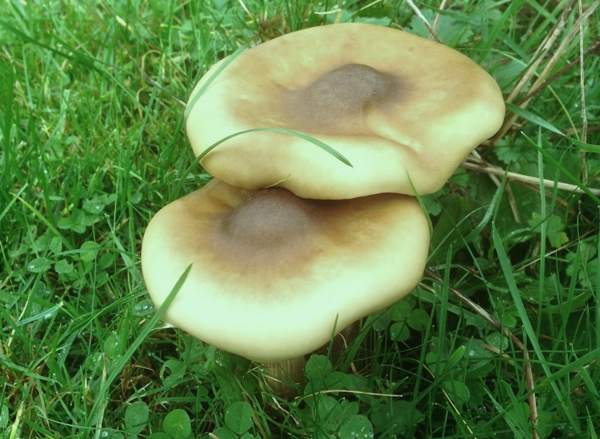
Etymology
The genus name Melanoleuca comes from the Ancient Greek words melas meaning black, and leucos meaning white. No cavalier mushroom is truly black and white, but many have caps whose upper surfaces are various shades of grey-brown, with whitish gills beneath. The specific epithet grammopodia comes from the Latin gramma meaning a sign, mark or line, and Podium meaning a bse or foot (the stem in this instance) and is a reference to the patterning (longitudinal grooves) on the stem.
Identification guide
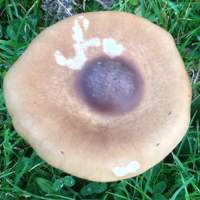 |
CapThe very variable caps are initially convex with a incurved margin, eventually flattening or becoming shallowly depressed with an umbo; 6 - 15cm across; smooth, occasionally cracking; various shades of yellowish brown to greyish brown, darker in the umbonate region; slightly hygrophanous, paler when dry. |
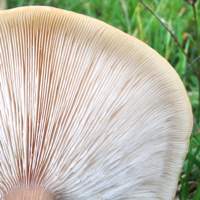 |
GillsSinuate; white or pale cream becoming creamy-grey with age. |
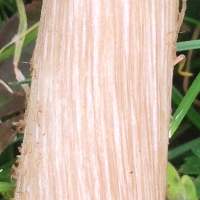 |
StemThe stem is generally much longer than the cap diameter; 5 to 12cm long and 0.5 to 1.5cm diameter; base slightly swollen; white, covered in brown longitudinal fibrils that give it a 'grooved' appearance; there is no stem ring. Flesh white, unchanging. |
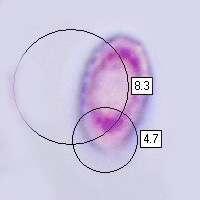 |
SporesEllipsoidal, densely warty, 8.5-9.5 x 5-6μm; amyloid. Spore printCreamy white. |
Odour/taste |
Odour described as 'like mice', or as some say like boiled cabbage. Taste sometimes slightly acrid but generally not distinctive. |
Habitat & Ecological role |
On soil in permanent pastures, lawns and parks; and sometimes among leaf litter in broadleaf woodland. |
Season |
July to November in Britain and Ireland. |
Similar species |
The Common Cavalier Melanoleuca polioleuca is similar but it can be separated by microscopic examination of the spores, cystidia etc. More than thirty species in the Melanoleuca genus are recorded from Britain and Ireland, and most have brownish caps and white gills; separating them is a task for specialists. (Many of them are these so-called 'cavaliers' are rare finds.). |
Culinary Notes
Some of the 'cavaliers' are reported to be edible although nothing special; however, as these kinds of mushrooms are notoriously difficult to identify I recommend that they should not be collected for food.
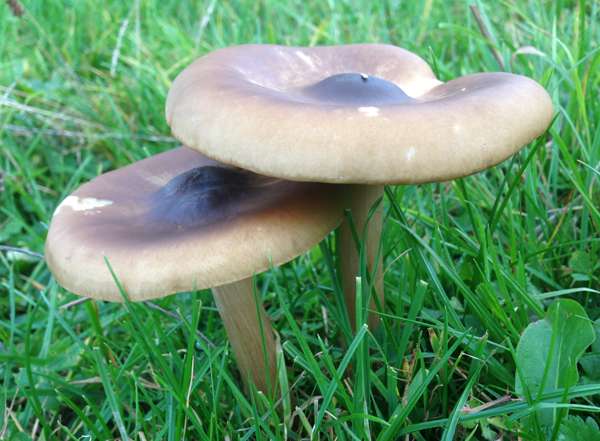
Acknowledgements
This page includes pictures kindly contributed by Simon Harding.
Reference Sources
Fascinated by Fungi, 2nd Edition, Pat O'Reilly 2016, reprinted by Coch-y-bonddu Books in 2022.
Dictionary of the Fungi; Paul M. Kirk, Paul F. Cannon, David W. Minter and J. A. Stalpers; CABI, 2008
Taxonomic history and synonym information on these pages is drawn from many sources but in particular from the British Mycological Society's GB Checklist of Fungi.
Fascinated by Fungi. Back by popular demand, Pat O'Reilly's best-selling 450-page hardback book is available now. The latest second edition was republished with a sparkling new cover design in September 2022 by Coch-y-Bonddu Books. Full details and copies are available from the publisher's online bookshop...
